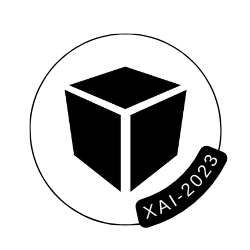| Chair: Ruairi O Reilly (Munster Technological University) | 

|
Explainability is a key consideration in healthcare, as AI systems are increasingly adopted to assist with medical diagnosis, treatment planning, and predicting patient outcomes. Explainable Artificial Intelligence (xAI) methods and the explanations of the inferences made by AI systems can both enhance the understanding and trust of practitioners and patients, leading to the more effective and ethical use of AI in healthcare. AI-based predictions critically impact humans as they can lead to wrong diagnoses or treatment recommendations or even be life-threatening. xAI in healthcare refers to the development and deployment of AI systems designed to be transparent and understandable to human users, such as healthcare practitioners and patients. However, applying xAI methods presents several challenges when applied to healthcare. These include the complexity of AI-based systems and the trade-off between their accuracy versus their explainability and interpretability; their integration with clinical workflows and their effective use by practitioners in healthcare; the ethical considerations of such systems that raise concerns around privacy, informed consent, patient autonomy and their rights that need to be protected; regulatory compliance of AI-based systems that are subject to regulatory compliance, which can add complexity to their development and deployment. The topics of interest include but are not limited to:
| Methods for explaining AI models in healthcare (LIME, Shapley, Integrated Gradients, Partial dependence plots, Accumulated Local Effects plots, Layer-wise Relevance Propagation, ) |
| Counterfactual explanations, model distillation, concept activation vectors, attention maps for AI models in health-care |
| Evaluating the effectiveness of explainable AI in healthcare (e.g. expert evaluation, user feedback, case studies, comparative studies, cognitive load assessments and ethical evaluations) |
| Equipping XAI methods with interactive user interfaces (e.g., visualizing explanations, interactive controls, natural language explanations, hypothesis testing, model transparency and comparisons to human decision-making) |
| Ethical considerations for the application of XAI methods in healthcare (e.g. Fairness and bias, transparency and accountability, informed consent) |
| Privacy and anonymity considerations for XAI methods in health-care (eg. privacy and security, accessibility, continuous monitoring and evaluation, resource allocation, equity) |
Submitted manuscripts must be novel and not substantially duplicate existing work. Manuscripts must be written using Springer’s Lecture Notes in Computer Science (LNCS) in the format provided here. Latex and word files are admitted: however, the former is preferred (word template, latex template, latex in overleaf). All submissions and reviews will be handled electronically. The conference has a no dual submission policy, so submitted manuscripts should not be currently under review at another publication venue.
| Articles must be submitted using the easy-chair platform here. |  |
The contact author must provide the following information: paper title, all author names, affiliations, postal address, e-mail address, and at least three keywords.
The conference will not require a strict page number, as we believe authors have different writing styles and would like to produce scientific material differently. However, the following types of articles are admitted:
| full articles | between 12 and 24 pages (including references) |
| short articles | between 8 and 12 pages (including references) |
| extended abstracts | between 4 and 8 pages (including references) |
 | Full articles should report on original and substantial contributions of lasting value, and the work should concern the theory and/or practice of Explainable Artificial Intelligence (xAI). Moreover, manuscripts showcasing the innovative use of xAI methods, techniques, and approaches and exploring the benefits and challenges of applying xAI-based technology in real-life applications and contexts are welcome. Evaluations of proposed solutions and applications should be commensurate with the claims made in the article. Full articles should reflect more complex innovations or studies and have a more thorough discussion of related work. Research procedures and technical methods should be presented sufficiently to ensure scrutiny and reproducibility. We recognise that user data may be proprietary or confidential, therefore we encourage sharing (anonymized, cleaned) data sets, data collection procedures, and code. Results and findings should be communicated clearly, and implications of the contributions for xAI as a field and beyond should be explicitly discussed. |
 | Shorter articles should generally report on advances that can be described, set into context, and evaluated concisely. These articles are not ‘work-in-progress’ reports but complete studies focused on smaller but complete research work, simple to describe. For these articles, the discussion of related work and contextualisation in the wider body of knowledge can be smaller than that of full articles. |
 | Extended abstracts should contain the definition of a problem and the presentation of a solution, comparisons to related work, and other details expected in a research manuscript but not in an abstract. They are not simply long abstracts or ‘work-in-progress’. An extended abstract is a research article whose ideas and significance can be understood in less than an hour. Producing an extended abstract can be more demanding than producing a full or short research article. Some things that can be omitted from an extended abstract, such as future work, details of proofs or implementation that should seem plausible to reviewers, and ramifications not relevant to the key ideas of the abstract. It should also contain enough bibliographic references to follow the main argument of the proposed research. |
Special track articles
The article submitted to the special tracks follows the normal procedure and must be submitted via easy-chair, as mentioned above. The types of articles admitted are full articles, shorter articles and extended abstracts, as described above. The author of an article for a special track must select the name of such special track in the list of topics in easy-chair, along with other relevant topics.
Ethical & Human Subjects Considerations
The conference organisers expect authors to discuss the ethical considerations and the impact of the presented work and/or its intended application, where appropriate. Additionally, all authors must comply with ethical standards and regulatory guidelines associated with human subjects research, including using personally identifiable data and research involving human participants. Manuscripts reporting on human subjects research must include a statement identifying any regulatory review the research is subject to (and identifying the form of approval provided) or explaining the lack of required review.
Further style instructions
We ask the authors to start the reference section on a new page. Appendices count toward the page limit. Use an even number of pages (4,6,8..,22, 24)
*All dates are Anywhere on Heart time (AoE)
Article (main track & special tracks)
| Authors/title/abstract registration deadline on submission platform (easy-chair)*: | |
| Article upload deadline on submission platform (easy-chair)*: | |
| Notification of acceptance: | |
| Registration (payment) and camera-ready (upload to easy-chair): | |
| Article presentation instructions notification | |
| Accepted article presentation (at xAI-2023) | July, 26-28th, 2023 |
| Publication (Springer CCIS series) | August 2023 |
Doctoral consortium (DC) proposal
| DC Proposal author/title registration deadline on submission platform (easy-chair): | |
| DC Proposal upload deadline on submission platform (easy-chair): | |
| Notification of acceptance: | |
| Registration (payment) | |
| DC proposal camera-ready (upload to easy-chair): | |
| DC presentation and meeting instructions notification | |
| Doctoral consortium meeting (at xAI-2023) | July, 26-28th, 2023 |
| Publication (planned with CEUR-WS.org*) | August 2023 |
Late-breaking work & demos
| Late-breaking work & demo author/title/abstract registration on submission platform (easy-chair): | |
| Late-breaking work & demo article upload deadline on submission platform (easy-chair): | |
| Notification of acceptance: | |
| Registration (payment) & Late-breaking work & demo camera-ready (upload to easy-chair): | |
| Late-breaking work & demo presentation instructions notification | |
| Late-breaking work & demo presentations (at xAI-2023) | July, 26-28th, 2023 |
| Publication (planned with CEUR-WS.org*) | August 2023 |
Special track proposal
| Proposal submission (contact): | Anytime before |
Panel discussion
| Panel Discussion proposals: | |
| Notification of acceptance: | |
| Registration of Panel Discussions facilitators: |
Conference
| The World Conference on eXplainable AI | 26-28 July 2023 |
The Peer-Review process
All articles submitted within the deadlines and per the guidelines will be subjected to a single-blind review. Papers that are out of scope, incomplete, or lack sufficient evidence to support the basic claims may be rejected without full review. Furthermore, reviewers will be asked to comment on whether the length is appropriate for the contribution. Each of the submitted articles will be reviewed by at least three members of the Scientific Committee.
After completion of the review process, the authors will be informed about the acceptance or rejection of the submitted work. The reviewers’ comments will be available to the authors in both cases. In case of acceptance, authors must meet the recommendations for improvement and prepare and submit the definitive version of the work up to the camera-ready paper submission deadline. In case of failure to consider the recommendations made by the reviewers, the organizing committee and the editors reserve the right not to include these works in the conference proceedings.
The article’s final version must follow the appropriate style guide and contain the authors’ data (names, institutions and emails) and the ORCID details. Submitted articles will be evaluated according to their originality, technical soundness, significance of findings, contribution to knowledge, and clarity of exposition and organisation.
According to the quality of the accepted article and its rank among all the other accepted manuscripts, it can be accepted for a full or short presentation or as a poster.
Code of Ethics
Inspired by the code of ethics put forward by the Association of Computing Machinery, the programme committee, supervised by the general conference chairs and organisers, have the right to desk-reject manuscripts that perpetuate harmful stereotypes, employ unethical research practices, or uncritically present outcomes or implications that disadvantage minoritized communities. Further, reviewers of the scientific committee will be explicitly asked to consider whether the research was conducted in compliance with professional, ethical standards and applicable regulatory guidelines. Failure to do so could lead to a desk-rejection
Proceedings publication
Each accepted and presented full, short and extended abstract manuscript, either as an oral presentation or as a poster, will be included in the conference proceedings by Springer in Communications in Computer and Information Science, edited by the general chair. At least one author must register for the conference by the early registration deadline. The official publication date is when the publisher makes the proceedings available online. This date will be after the conference and can take a number of weeks. If authors would like to publish their article open access (upon a fees with Springer), please refer to this page.
 |  |
Indexing
 |  |  |
 |  |  |
 |  |  |

